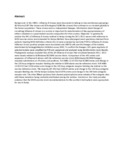The appropriateness of WHO influenza B vaccine component to Kenya in 2011-2012
| dc.contributor.author | Ocholla, S | |
| dc.contributor.author | Jumba, G | |
| dc.contributor.author | Bulimo, W | |
| dc.contributor.author | Achilla, R | |
| dc.contributor.author | Wadegu, MO | |
| dc.contributor.author | Mukunzi, S | |
| dc.contributor.author | Majanja, JM | |
| dc.contributor.author | Opot, B | |
| dc.contributor.author | Osuna, F | |
| dc.contributor.author | Muthoni, J | |
| dc.contributor.author | Njiri, J | |
| dc.contributor.author | Mwangi, J | |
| dc.contributor.author | Kibet, K | |
| dc.contributor.author | Coldren, R | |
| dc.date.accessioned | 2014-12-11T15:50:09Z | |
| dc.date.available | 2014-12-11T15:50:09Z | |
| dc.date.issued | 2014 | |
| dc.identifier.citation | Ocholla S, Jumba G, Bulimo W, Achilla R, Wadegu MO, Mukunzi S, Majanja JM, Opot B, Osuna F, Muthoni J, Njiri J, Mwangi J, Kibet K, Coldren R. The Appropriateness of WHO influenza B vaccine component to Kenya in 2011-2012. Hilton Hotel; Nairobi, Kenya; 2014. | en_US |
| dc.identifier.uri | http://hdl.handle.net/11295/77341 | |
| dc.description.abstract | Background: In the 1980’s, influenza B viruses were discovered to belong to two evolutionary groupings (B/Victoria/2/87-like viruses and B/Yamagata/16/88-like viruses) that continue to co-circulate globally in the human population. These viruses exist as independent lineages. Information about lineage of circulating influenza B viruses in a country is important for determination of the appropriateness of either a trivalent or a quadrivalent vaccine composition for that country. Objective: To genetically analyze the HA1 of influenza B viruses isolated in Kenya during the 2011-2012 season with reference to WHO vaccine strains recommended for Kenya.Method: Nasopharyngeal swab specimens obtained from patients meeting WHO definition criterion for ILI were screened by real-time PCR for influenza B viruses. Influenza B virus positive samples were inoculated onto MDCK cells and the lineages of the isolates determined by hemagglutination inhibition assay (HAI). To confirm the lineages, HA1 gene segments of selected isolates were amplified by PCR and sequenced and analyzed using bioinformatics tools.Results: Phylogenetic analyses revealed that all the 24 influenza B viruses that circulated between 2011- 2012 were closely related to B/Brisbane/60/2008 vaccine Strain. Comparison of the HA1 amino acid sequences of influenza B viruses with the reference vaccine strain (B/Brisbane/60/2008 lineage) revealed substitutions at 19 amino acid positions. FLU-MBG-11-02-010 had R188K amino acid change in the 120-loop antigenic receptor binding site relative to B/Brisbane vaccine reference strain. FLU-MBG-12-05-011 had V124I amino acid change in the 120-loop antigenic receptor binding site relative to the vaccine reference strain. The majority (87.5%) had I146V/A amino acid change in the 150-loop antigenic receptor binding site. All the Kenyan isolates had D197N amino acid change in the 190-helix antigenic receptor site. The other fifteen positions that showed polymorphisms were outside of the antigenic sites with these mutations being randomly distributed among the isolates. Conclusion: Our study provides evidence that the WHO vaccine strain recommendations for the southern hemisphere were appropriate for use in Kenya | en_US |
| dc.language.iso | en | en_US |
| dc.publisher | University of Nairobi | en_US |
| dc.title | The appropriateness of WHO influenza B vaccine component to Kenya in 2011-2012 | en_US |
| dc.type | Article | en_US |
| dc.type.material | en | en_US |
Files in this item
This item appears in the following Collection(s)
-
Faculty of Health Sciences (FHS) [10378]

